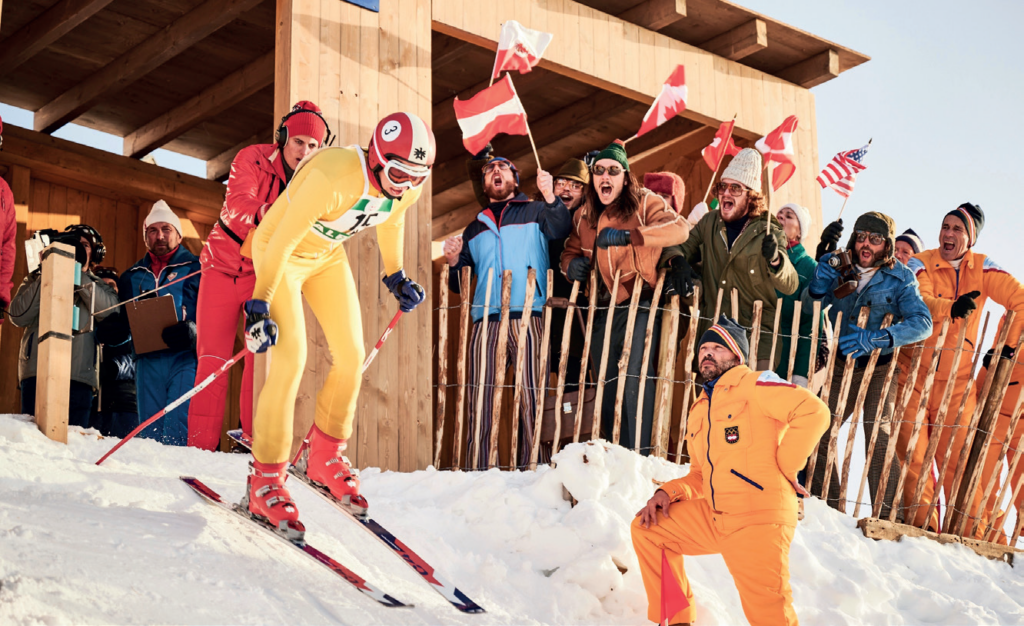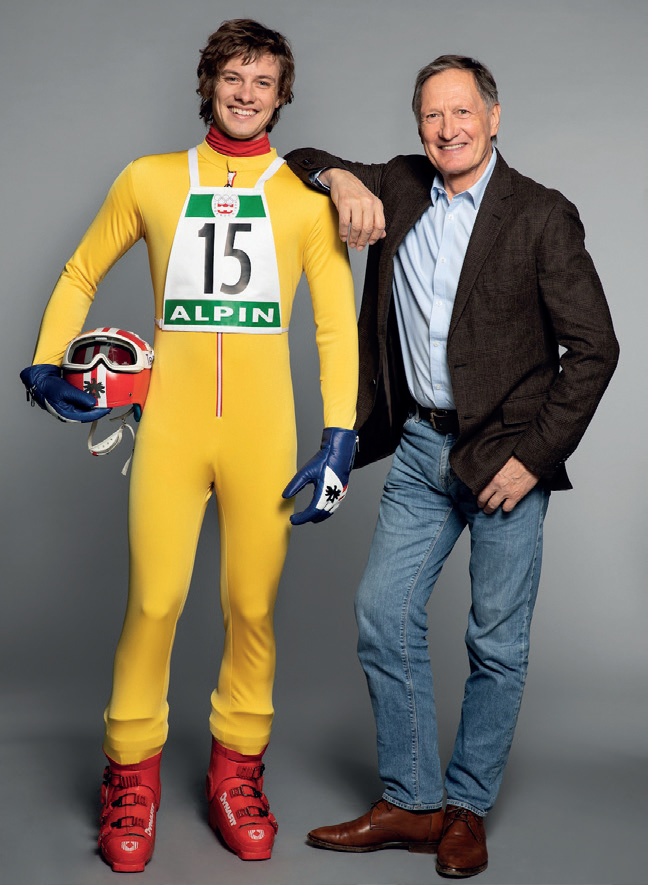Austria's skiing legend Franz Klammer is still present in the public eye - and not only because of the successful film "Chasing the Line" that was presented three years ago. It is mainly about his spectacular Olympic victory in 1976 on the Patscherkoferl, which played a key role in making the Carinthian a national hero. On December 7, 2023, Franz Klammer celebrated his 70th birthday - and as befits a former top athlete - with a legendary race and a convivial evening in Bad Kleinkirchheim. A good opportunity to once again demonstrate his unpretentious manner, relaxed attitude and good-humored charisma, which still make him highly popular. Ski Guide Austria spoke to Franz Klammer about what exactly was going on around his Olympic victory, how he dealt with pressure and expectations from the public and how he set up the race so that he could win. And he describes how skiing and technique have changed since his active days.

SKI GUIDE: Mr. Klammer, the film is about the days before and around your Olympic victory, when the pressure of expectations was enormous. All of Austria expected you to win...
FRANZ KLAMMER: Yes, but I put the most pressure on myself and expected to win. In 1975 I won all the races and in 1976 before the Olympics in Wengen, Morzine and Wengen. I was the best downhill skier at the time; if I hadn't won, it would have been a bitter disappointment for me. Second place was not in the back of my mind - either I would be eliminated or win.
Her journey was a real hell ride. It really took it out of her...
My style was generally a bit unsteady; I rowed with my hands. That enabled me to keep the skis in line; I carved pretty well, even though we didn't have carving skis back then. I was one of the first to do that and was therefore better than the others for a while. That's why I rowed like that on the upper part of the course; the skis worked anyway on the lower part. Our downhill skis back then had a radius of 64 metres; today they have a radius of 48 metres - those were our giant slalom skis back then. Today they ski downhill with giant slalom skis, so to speak - and therefore make a lot more turns.
At the request of your ski manufacturer, you should have used a new hole ski in the Olympic downhill.
Josef Fischer even wanted to force me to do it for marketing reasons, but I refused. I said I would use the skis I had won everything with. Anything else would have been a serious mistake on my part; I had to eliminate all uncertainty factors. When I knew that my usual skis were at the top at the start, I felt really comfortable.
At the interim time you were only third…
I somehow felt it. Of course I took a lot of risks, but I was too direct in some of the bends and crouched too long at the top because I wanted to push myself to the limit. When I jumped out at Bärneck, Toni Sailer (then head coach and technical director of the ÖSV, ed.) said on the radio when he saw my ski tips disappear: Now it's gone - and by that he meant that I had flown out. To which Charly Kahr (then coach of the downhill team, ed.) replied: What are you talking about? It's still skiing with me (laughs).
And then?
I had the feeling that I had to do something. The reaction of the spectators was not as enthusiastic as I had thought. So I changed my line and went all the way up the Bärneck; a place that I had never visited because I was never really happy with that corner. I went on the inside once, then in the middle, but I had never gone all the way before. But that was pretty much the best decision because I won the race there and kept up the speed there. Then I just managed the Johannesweg with a last-ditch effort; a difficult section of the course that I had no time to prepare for after landing.
When you look back: How do the ski circus and technology differ compared to the past?
It's difficult to compare. Racing has changed in general - with the material, with the way the slopes are prepared. It really started to change with artificial snow. Back then, conditions were much more even than they are today. Karl Schranz's downhill run in Chamonix in 1962, for example, was incredible; by comparison, we were already skiing on flat slopes. And today it's dramatically different. Back then, there were no safety precautions, nothing. Of course, the speed was lower back then; but if you ski past a tree at 80 km/h, it's more dangerous than if someone flies into the net at 130 km/h today. Today, there are no more passages where you can gain time. In the past, there was compression in Val-d'Iserè or the Hausbergkante in Kitzbühel. If you got that right, you could gain half a second to a second. Today, the slopes are wider, easier and more balanced. Now it's more difficult and the runners are constantly fighting for hundredths and tenths of a second. It's a job from top to bottom.
Austria has dominated skiing for decades – now the other nations have caught up a lot. What are the reasons for this?
Training has also changed. Instead of small groups and individual training, we were a large group. Including the C and B squads, there were 25 people. I don't think that was so bad, because the young people trained with the established ones and could learn something from each other. The team spirit was probably stronger as a result, although I can't say exactly what it is like today. It's probably not as homogeneous. But skiing is a team sport - you can see how the Norwegians and the Swiss are pushing each other at the moment. I think there are waves up and down. We have some very good people - you just have to keep working and just stick with it. What I've noticed is that the transition from the lower classes to the World Cup isn't working as it should. They take too long. In the downhill, the so-called young people are 27 or 28 years old. I won all the races when I was 21. But I don't know what to do about it, because I'm not in it.

Are there more injuries today?
The injuries are different. Today you see every fall. In the past, you only saw a third of the course, especially on the downhill. You didn't notice what was happening at the top. Back then there were broken ankles and similar things. In my opinion, the hard shoes are the crux of the matter today. There is a lever, the artificial snow is aggressive, the ski doesn't give in with its sidecut and then you have a concrete block on your feet that also doesn't give in. It has 170, 180 flex. Apparently you have to have one of those these days so that you have grip and can build up pressure. And unfortunately the knee hasn't grown with it. That's why injuries happen even without a fall. The cornering speed today is enormous; the athlete has also become a different person compared to before. I had strength and stamina, and was never really tired - Wengen, for example, was OK at 2.30, I could have gone further. And today, with the thighs that you need to get the ski to work and get it to bend and the sidecut to work, you need enormous strength to withstand the resistance. With us, you couldn't use the strength because there was no resistance and the snow gave way. Then you just hit a sheet of ice and had to go over it with rounded edges. And now the edges are so sharp that you can shave yourself with them. So skiing has changed a lot - but basically you ski to the limit that is possible at the time - what the equipment and slopes allow.
You are still living off your Olympic victory…
That's how it is. I came to the race as the favorite and knew what winning the Olympics meant, but I couldn't have foreseen the long-term consequences. Of course, I'm still happy about them.